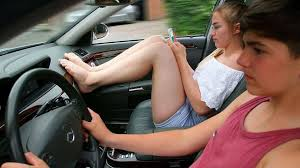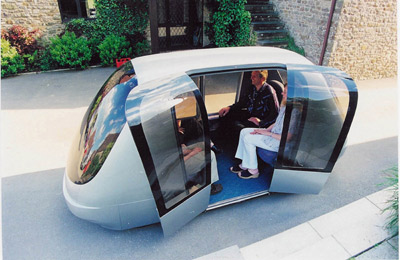 www.kisslinglaw.com
www.kisslinglaw.com
Great new summary of new case law on Search of Vehicles after Stop and when the stop ends. Thanks to Shea Denning from the NC SOG.
The court of appeals decided another significant
Rodriguez case yesterday, ruling (again) in
State v. Reed
that the highway patrol trooper who stopped the defendant for speeding
on Interstate 95 detained the defendant for longer than necessary to
carry out the mission of the stop without reasonable suspicion of other
criminal activity.
The friendly pit bull case. When Trooper Lamm of the
State Highway Patrol approached the car David Reed was driving, he saw
energy drinks, trash, air fresheners, and dog food scattered on the
floor of the vehicle. Reed’s fiancée, Usha Peart, was sitting in the
front passenger seat and held a female pit bull in her lap. She told
Trooper Lamm the dog was friendly, and he petted the dog. Meanwhile,
Reed retrieved his New York driver’s license along with the registration
and rental agreement for the vehicle.
Please exit the vehicle. Trooper Lamm told Reed to
get out of the car and to come sit in the patrol car. When Reed got out
of the car, the trooper frisked him and found a pocket knife.
Reed sat in the front seat of the patrol car. Trooper Lamm’s K-9 was
in the back seat. Reed initially sat with the door open and one leg
outside of the car. Lamm told him to close the door. Reed said he was
scared to do so. Lamm said: “‘Shut the door. I’m not asking you, I’m
telling you to shut the door. I mean you’re not trapped, the door [is]
unlocked. Last time I checked we were the good guys.’” (Slip op. at 4.)
Reed responded, “‘I’m not saying you’re not,’” to which Lamm replied,
“‘You don’t know me, don’t judge me.’”
Where are you headed? Trooper Lamm questioned Reed
while he checked his record. Reed admitted that he had previously been
arrested for robbery; he said he was in North Carolina to visit family
in Fayetteville. When Lamm noticed that the rental agreement listed a
different car than the one Reed was driving, he got out of the patrol
car to ask Peart for the correct agreement. He told Reed to “‘sit
tight.’” (Slip op. at 5.) Peart explained that the rental agreement
listed a different car because the original vehicle had been struck and
they were driving a replacement vehicle. The trooper called the rental
company, which confirmed this information. Peart, like Reed, said the
two were traveling to Fayetteville to visit family.
Mind if I ask a few questions? While Reed was still
sitting in the front of the patrol car, Trooper Lamm returned his
paperwork and driver’s license and issued a warning ticket for speeding.
Lamm said he was “‘completely done with the traffic stop,’” but wanted
to ask Reed additional questions. Lamm said Reed nodded his head in
response. By this time, another trooper had arrived on the scene and had
parked his vehicle, with the blue lights activated, behind Lamm’s. This
trooper stood outside the passenger door of the patrol car where Reed
was sitting.
Sit tight. Lamm asked Reed for permission to search
the car. Reed said he should ask Peart and added: “‘I’m just saying,
I’ve got to go to the bathroom, I want to smoke a cigarette, we’re real
close to getting to the hotel so that we can see our family, like, I
don’t, I don’t see a reason why.’” Lamm told Reed to “‘sit tight,’” and
went back to the rental car. By this time, a third trooper was on the
scene.
Peart initially said Lamm could not search the car, but subsequently
acquiesced to his repeated requests. Lamm found cocaine under the back
passenger seat.
Procedural history. Reed was charged with
trafficking cocaine. He moved to suppress the evidence discovered in the
search of the rental car. The trial court denied the motion. Reed pled
guilty, preserving his right to appeal the denial of his motion to
suppress, and was sentenced to 70 to 93 months imprisonment. Reed
appealed.
The court of appeals in
State v. Reed, __ N.C. App. __, 791
S.E.2d 486 (2016), reversed, holding that the trial court’s findings did
not support its conclusion that Trooper Lamm had reasonable suspicion
of criminal activity to extend the traffic stop and conduct a search
after it concluded. The State petitioned for a writ of supersedeas,
which the state supreme court granted. The North Carolina Supreme Court
subsequently vacated the court of appeals’ opinion and remanded the case
for reconsideration in light of
State v. Bullock, __ N.C. __, 805 S.E.2d 671 (2017) (discussed
here).
State v. Reed, ___ N.C. ___, 805 S.E.2d 670 (2017).
Legal backdrop. The United States Supreme Court held in
Rodriguez v. United States,
__ U.S. __, 135 S.Ct. 1609 (2015), that a traffic stop becomes unlawful
if it is prolonged beyond the time reasonably required to accomplish
its mission. Specifically,
Rodriguez held that a traffic stop
may not be extended for even a de minimis period to carry out
activities, such as a dog sniff, that are unrelated to the mission of
the stop, unless that delay is supported by reasonable suspicion to
believe that criminal activity is afoot.
The North Carolina Supreme Court in
Bullock, ___ N.C. ___,
805 S.E.2d. 671 (2017), considered whether a traffic stop in which the
officer ordered the driver to get out of his vehicle and into the patrol
car, frisked him, and ran record checks while the defendant was seated
in the patrol car, was lawful. The court determined that none of these
activities unlawfully prolonged the stop and that, by the time the
database checks were complete, the officer had developed reasonable
suspicion to prolong the stop so that a dog sniff could be performed.
The defendant’s nervous behavior, contradictory and illogical
statements, possession of large amounts of cash and multiple cell
phones, and his driving of a rental car registered to another person
provided reasonable suspicion of criminal activity.
Analysis. The court in
Reed determined that
Bullock resolved several issues in the case. Under
Bullock,
Trooper Lamm’s actions of requiring Reed to get out of his car,
frisking Reed, and making Reed sit in the patrol car while Lamm checked
his record and questioned him did not unlawfully extend the stop.
Nevertheless, the court said the case was distinguishable from
Bullock
because after Trooper Lamm returned Reed’s paperwork and issued the
warning ticket, Reed “‘remained unlawfully seized in the patrol car.’”
(Slip op. at 10.)
The court explained that while the return of a person’s driver’s
license and other paperwork normally marks the end of a traffic stop and
the commencement of a consensual encounter, a reasonable person in
Reed’s position when the paperwork was returned would not have believed
that he was free to terminate the encounter. Reed remained seated in the
patrol car. Trooper Lamm continued to question him. When Lamm left the
patrol car to ask Peart for consent to search the rental car, he told
Reed to “‘sit tight.’” (Slip op. at 10.) In addition, another trooper
stood directly outside the car door where Reed was seated. Lamm himself
admitted that Reed was not free to leave. This continued detention was
not, in the court’s view, consensual nor was it supported by reasonable
suspicion that criminal activity was afoot. Instead, the facts known to
the officer, which included Reed’s nervous appearance, the dog, the dog
food, and the detritus in the car were, the court said, “legal activity
consistent with lawful travel.”
Thus, the court concluded that, even after considering
Bullock, the trial court erred in denying the defendant’s motion to suppress.
The dissent. Judge Dillon, who dissented from the first court of appeals decision in
Reed,
likewise dissented from yesterday’s opinion. Dillon reasoned that Reed
consent to the search of the vehicle after the traffic stop concluded
and that, even if one assumed he had not, Trooper Lamm had reasonable
suspicion of separate, independent criminal activity to support the
extension of the stop.
Stay tuned. The dissent provides the State with an
appeal of right to the state supreme court. If the State exercises that
option, Reed will continue to serve the sentence for which he has been
imprisoned since July 2015 and the North Carolina Supreme Court will
again be called upon to further define the parameters of
Rodriguez
as applied to North Carolina traffic stops. If that happens, we’ll be
sure to write all about it. Next time, though, I can skip the facts and
just remind you that this is the friendly pit bull case.

